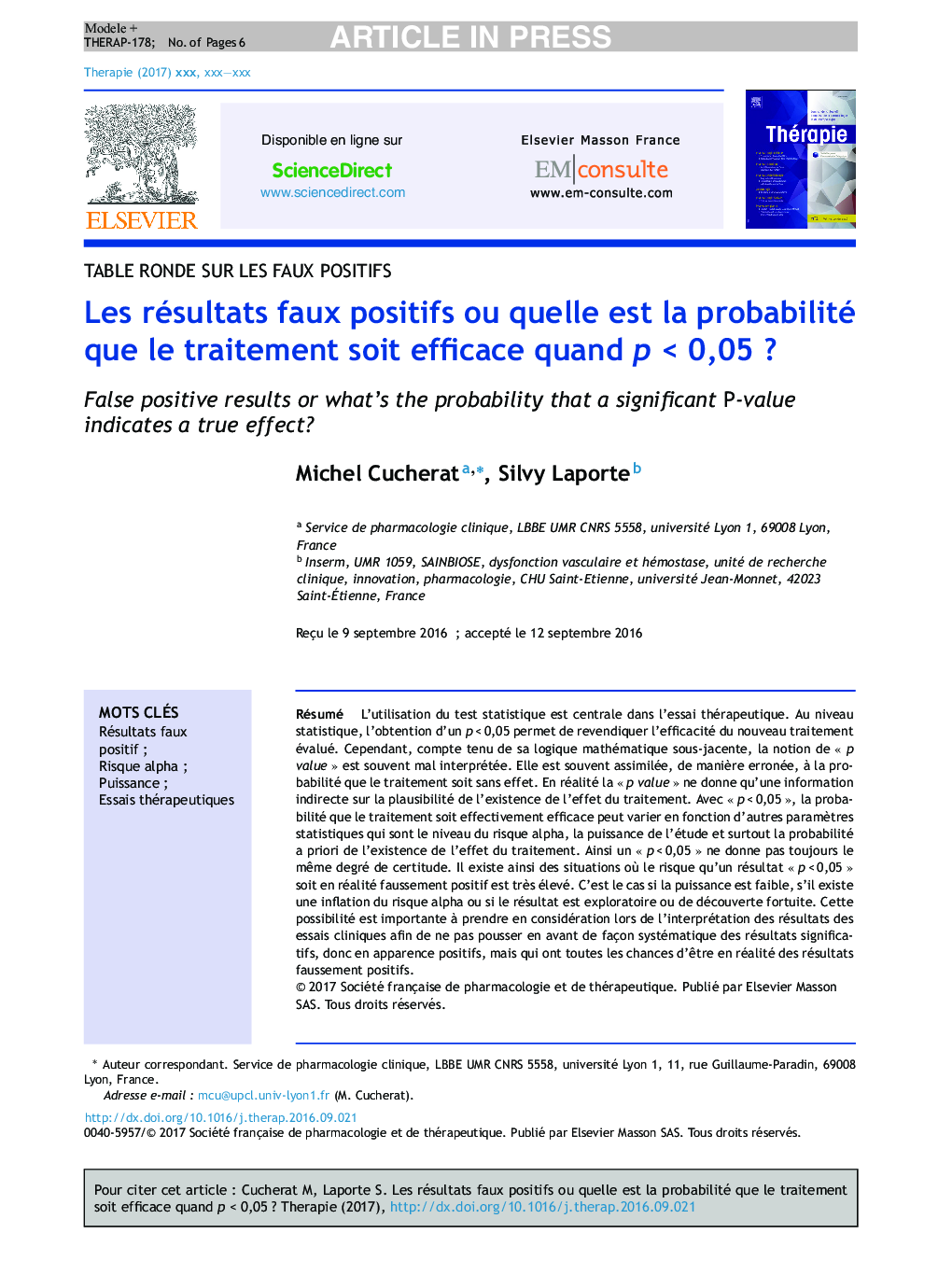| Article ID | Journal | Published Year | Pages | File Type |
|---|---|---|---|---|
| 5559098 | Thérapie | 2017 | 6 Pages |
Abstract
The use of statistical test is central in the clinical trial. At the statistical level, obtaining a PÂ <Â 0.05 allows to claim the effectiveness of the new studied treatment. However, given its underlying mathematical logic the concept of “P value” is often misinterpreted. It is often assimilated, mistakenly, to the likelihood that treatment is ineffective. Actually the “P value” gives an indirect information about the plausibility of the existence of treatment effect. With “PÂ <Â 0.05”, the probability that the treatment is effective may vary depending on other statistical parameters which are the alpha level of risk, the power of the study and especially the a priori probability of the existence of treatment effect. A “PÂ <Â 0.05” does not always produce the same degree of certainty. Thus there exist situations where the risk of a result “PÂ <Â 0.05” is in reality a false positive is very high. This is the case if the power is low, if there is an inflation of the alpha risk or if the result is exploratory or chance discoveries. This possibility is important to take into consideration when interpreting the results of clinical trials in order to avoid pushing ahead significant results in appearance, but which are likely to be actually false positive results.
Keywords
Related Topics
Health Sciences
Pharmacology, Toxicology and Pharmaceutical Science
Pharmacology, Toxicology and Pharmaceutics (General)
Authors
Michel Cucherat, Silvy Laporte,
